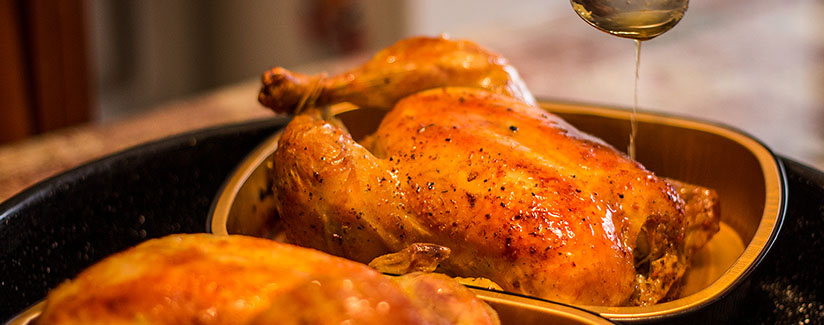
White Goo on Chicken – What Is It?
Have you ever noticed the white goo on chicken as you’re cooking it? Well, you’re not alone. Reader Kathleen recently sent us the following message:
“Can anything be done on how we raise our chickens? The breasts are huge. Way too big. Then they put some solution in them which leaks out white goo while they’re cooking. On top, they have no taste. We can’t afford to buy Bell and Evens. There’s got to be a better way.”
To answer the question, we talked with Dr. Casey Owens – Associate Professor in the Department of Food Science and member of the Center of Excellence for Poultry Science at the University of Arkansas, and Dr. Don Conner – Professor and Head of the Department of Poultry Science, Auburn University. Here’s what they had to say.
This reader feels today’s chicken breasts are simply too large. Are they bigger than they used to be? Why?
Dr. Conner:
Yes. The reason the breasts are larger is because consumers want products that are easier to prepare, which means products that are cut up, trimmed and ready to cook (meat case items) or those that are processed a bit more – like nuggets and strips (oftentimes freezer items). In fact, 90 percent of the chicken sold is cut up into pieces or goes into further processed products. Because of this, only about 10 percent of birds raised are sold as whole chickens. And if it wasn’t for the reemergence of rotisserie chicken at supermarkets, that 10 percent would probably be lower.
Dr. Owens:
It may seem that boneless, skinless chicken breasts are large. In fact, they are larger than those you’d find on a rotisserie-style chicken. The larger amount of breast meat allows for portioning to increase the usability of the product. When you purchase a whole chicken, there won’t be as much breast meat, because consumers typically want a smaller bird (3 to 4 pounds is pretty typical). When you consider all chickens in the U.S., more than 30 percent of birds are more than 7.5 pounds. This larger bird provides more meat for all the various products that we consume – from filets and cutlets to wings and nuggets, or formed meat. In terms of raising larger birds, extensive research goes into ensuring birds will remain healthy and productive, no matter their size.
Are there welfare concerns for these birds that are growing larger breasts?
Dr. Conner:
I understand the concern with growing larger birds. What the larger breasts have done, actually, is just change the shape of the bird over time. I actually have a poster that compares chickens from 30 years ago to today’s chickens and it’s interesting to look at the difference in the body – that the space between their legs has increased over time – thus stabilizing their weight. They do have a little different gait because of that, but that doesn’t translate into difficulty, just a difference.
Our reader mentioned “white goo” that surfaces on chicken while cooking it. We’ve noticed it too – what is it?
Dr. Conner:
The white goo is primarily water and protein. Protein from poultry meat is easily digested, which means it’s denatured quickly through the cooking process, so it leaches out water, bringing out soluble protein. These are more noticeable with a larger breast, and white proteins tend to show these easier than dark proteins. Some processors will put some solution to add flavor or stability to the product, but this is always labeled, so consumers should pay attention if they don’t want a product that has an added solution.
Dr. Owens:
It’s actually protein. In some cases, when chicken is processed, a low-salt solution (less than 1 percent salt) is added to the meat to retain moisture and tenderness, and avoid the possible negative effects of overcooking. Sometimes, proteins are dissolved into this salt solution, and end up cooking out. That is what you are seeing when the white matter surfaces. The white matter is actually protein that is cooked, just like a chicken breast turns white in appearance upon cooking.
Our reader mentioned the lack of flavor – is there any validity to this?
Dr. Conner:
Flavor could be different than chicken from yesteryear. Some see this as an advantage because it allows consumers to take a blank slate and flavor it exactly as they wish. Chicken today may be less flavorful than chickens that would have been raised by our grandparents. For example, those chickens took a longer time to raise, so there was a different connective tissue structure and it aged the meat differently (giving it a more gamey flavor which was great for chicken stock). Along with that, the diet of our grandparents’ chickens was very different than what chickens eat today. This also contributes to the difference in flavor.
“Roasted Chicken” by Marjan Lazarevskimizo is licensed under CC BY-ND 2.0.



























